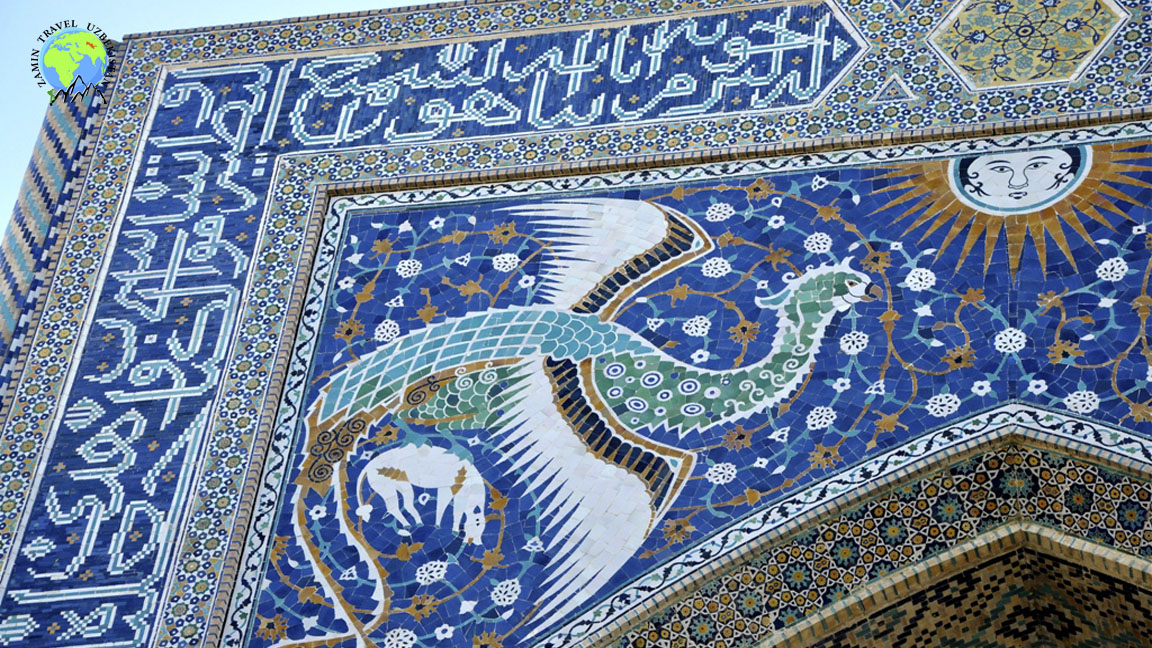


Lyabi-Khauz is an architectural complex in the center of Bukhara and consists of three monumental structures. The complex has an unmistakable character. In contrast to traditional traditions, a town square or a crossroads form the center of an architectural complex, here it is built around a large khauz (pond). First, the Kukeldash madrasah was built in 1568. Its monumentality was constructed through forms, coordinated with the richness of the ornamentation. The madrasah had 160 cells and was the largest Islamic school in Bukhara. The architect of the madrasah used the architectural laws quite artistically, breaking flanks, facades with arches and loggias. More than 50 years later, in 1620, during the reign of the enlightened ruler Imamkulikhan, the local dignitary Nadir Devanbegi decided to build a chanaka, a hospice for the wandering dervishes, on his estate. The building wasn't big; the architects actually had to squeeze it into a small space between tightly packed apartment buildings. In the south, Chanaka was enveloped with the main channel of Bukhara Shakhrud and Nadir Devanbegi had decided to build a pond in front of the building. The pond later became conceptually “Lyabi-Khauz.” At that time, there were more than 80 ponds in Bukhara, which were the city's main source of water. Lyabi-Khauz turned out to be the largest: over 150 meters long, 118 meters wide and 16 meters deep. The sides of the water basin were made from stone blocks with steps for the Meshkab water carriers.
Nadir Devanbegi, the emir's uncle, had a great deal of influence on state affairs and, in the absence of the ruler, negotiated agreements with foreign envoys on his behalf. Using his authority, he wanted to construct a profitable caravanserai on the bank of the pond directly across from the Chanaka. However, Imamkulikhan was very hard on his men, both his entourage and their families. When the caravanserai was ready, Nadir Devanbegi invited the people to the opening ceremony. Although in medieval Bukhara many religious buildings such as madrasas, mosques and khanakas dominated the residential areas imposingly, Imamulikhan has no commercial projects - like his uncle. In his public speech, the ruler unexpectedly congratulated the opening of another facility that “pleased” God, so Nadir Devanbegi did nothing but convert the caravanserai into a madrasah. The layout of the structure proves the fact that the building was planned as a caravanserai. The entrance is straight, not square like the Kukeldash Madrasah. The rear of the building has an entrance for pack animals. There were no classrooms and terraces for classes in the summer. A large portal was placed on the front of the structure. It is decorated with tiles, mosaics with fabulous flies flying with their prey in the sun's rays. The water of the Lyabi-Khauz pond is lined with centuries-old trees on the shore and offers a pleasant, distinctive microclimate that attracts residents and guests of the city. Today next to the Nadir Devanbegi Madrasah there are houses with traditional handicraft shops selling gold embroidered souvenirs and jewelry.